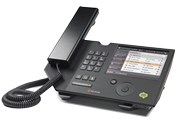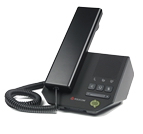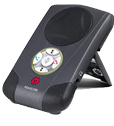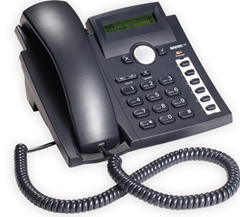I Have a New Phone (and it’s just a phone!)
I mentioned in my last post that I’m now focused on Unified Communications at Microsoft. I’ll go deep on what Unified Communications (UC) is later - should you care.
The BIG news is that as part of my new gig, I get to use lots of cool phones and devices that integrate with Office Communication Server (OCS) and Microsoft Lync (the new version about to be released).
IP Phone are Everywhere!
Many of the folks at Microsoft no longer have regular telephones on their desks – many locations have moved to a completely “soft” phone model (voice services through your PC) using a USB headset, USB speakerphone, USB handset, or even the old PC speakers and integrated microphone.
Sure, there are “hard” phones all over Microsoft – some traditional “copper” attached phones that talk to a vintage PBX (like in my rural Microsoft office) as well as network-based “hard” phones that plug right into an Ethernet jack in the wall (these are everywhere in Redmond) – like the awesome Polycom CX7000. The CX700 is great, but it does lots more than just let  you dial a number using the key pad!
you dial a number using the key pad! 
The Problem for lots of organizations has been that there’s a real need for IP “hard phones” – standalone devices that look and act just like an old telephone. Many users don’t adjust well to a handset / headset / speakerphones without a physical keypad. I have phones I love/use every day without keypads (like the USB Polycom CX200 or CX100) and THEY ROCK but they aren’t for every situation.
Some users and situations mandate a low cost solution with a keypad (like with the USB attached CX300). I REALLY LIKE my CX300…it has almost everything – great price, USB interface, speakerphone, and dial pad. The one limitation (over my CX700) is that it is not a stand alone device – it still requires a PC to function. I have other USB devices with a keypad I use a lot (like the Jabara 520 and the Plantronics 1100M ) This is not a draw back in many dedicate scenarios (where a user has a PC at work or home), but it still doesn’t address a stand alone “hard phone” scenario (like, say, my office at home…where I may not always have a work PC fired up all the time). Yes the CX700 can do that for me, but it’s a high-function, executive phone – and yes, newer more cost effective devices (like the Polycom CX500) are due out soon to work with Lync.
I know I’m completely ignoring video and headsets in this post (give me time!), but I don’t personally use those as much.
So What’s My New Phone?
I just got a Snom 300 with updated firmware for work with OCS (and Lync) and it’s
A GREAT LOW PRICED IP PHONE! I opened the box, plugged it in, and with limited  configuration it worked with Lync from my house! I actually got a call from someone at work on it just after I connected it to Lync.
configuration it worked with Lync from my house! I actually got a call from someone at work on it just after I connected it to Lync.
How hard was the installation? I opened the box, plugged the handset in and after that yes, setting it up was only a tiny bit harder than plugging in an RJ11 cable, but not really that much more difficult.
To set it up I had to:
- Plug in RJ45 cable
- Plug in Power (plug in the wall wart)
- Enter my SIP URI (my e-mail address), domain ID and password
Right away on my home network it would not work (Lync authorization failure) . A quick check of the Snom knowledgebase and I new that the phone’s time was not close enough to the time in my (Microsoft’s) infrastructure. I set it to a known time server on the the Internet to get back on track via the web UI (browsed to the IP address of the phone at my house – something like /advanced_network.htm">/advanced_network.htm">https://<phone IP>/advanced_network.htm) and everything worked like a champ!
I’ll try to pull together at more detailed post on the provisioning process later (let me know if you are interested!).
-John